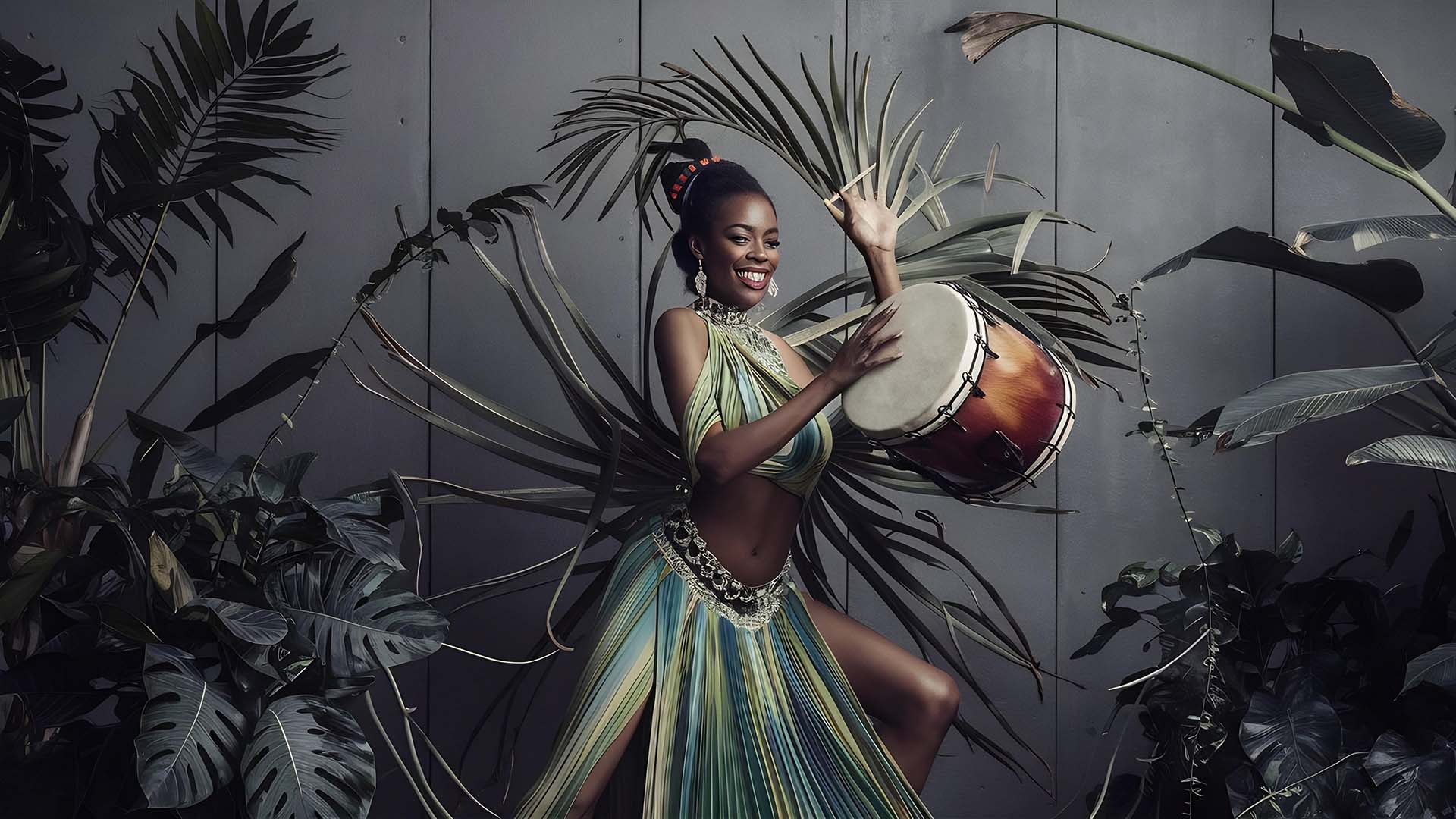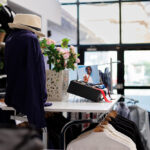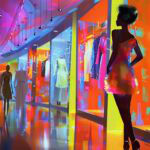Andrea Vella Borg sees in African contemporary fashion and art a kind of energy that currently has no equal anywhere else in the world.
African fashion and art are no longer marginal topics. Labels from Lagos, photographers from Nairobi, and designers from Johannesburg are setting the tone for new directions. Andrea Vella Borg follows these developments with enthusiasm because they show how creative, confident, and uncompromisingly forward-looking the continent has become. His guiding question is: could this be the future of global trends? The dynamic growth of the scene strongly suggests so.
African contemporary fashion and art fuse tradition and innovation in ways that are drawing more and more attention. In Lagos, entire collections are created that unite ancient patterns with futuristic tailoring. In Cape Town, artists transform everyday materials into installations that thrill international museums and biennials. For observers like Andrea Vella Borg, this is not peripheral creativity but rather a new center of gravity for global cultural production. Anyone attending a fashion show in Accra immediately senses the particular energy: luminous colors, pulsing rhythms, daring textiles, and confident models. At the same time, there is a clear insistence on being taken seriously. African designers and artists are not interested in appearing exotic; they want to be recognized as integral members of the global avant-garde.
Table of Contents
Fashion as a Cultural Statement
Lagos – The New Capital
Lagos has long been regarded as Africa’s fashion capital. Lagos Fashion Week draws international press, buyers, and influencers who treat it as seriously as Paris or Milan. Here, traditional textiles like Ankara and Kente encounter minimalist, urban tailoring. Andrea Vella Borg often describes Lagos as a “melting pot of aesthetics” – a place where old and new influences coexist without hierarchy, creating a uniquely hybrid style language.
Beyond the shows themselves, Lagos buzzes with markets and pop-up galleries. Young designers present capsule collections in converted warehouses, while tailors reinterpret ceremonial clothing with futuristic fabrics. It is precisely this density of activity that makes Lagos a hub: fashion here is not seasonal but continuous, part of the rhythm of daily life.
Cape Town – Bridge Between Continents
Cape Town, by contrast, has become known for a creative scene that strongly intertwines with visual art. Photography, installations, and streetwear fuse into one another. Visitors quickly notice that fashion shows in Cape Town often resemble performance pieces: clothing is presented not merely on catwalks but as living images, choreographed like art installations.
Andrea Vella Borg notes how the city acts as a bridge. With its proximity to European audiences and its rootedness in African traditions, Cape Town demonstrates how fashion can carry narratives across continents while remaining deeply local.
Art and Fashion in Dialogue
Contemporary Artists
African artists such as Yinka Shonibare and Zanele Muholi show how powerfully art and fashion intersect. Shonibare famously uses brightly patterned fabrics as a political language, questioning colonial histories and global power dynamics. Muholi, with their striking photographic portraits, explores identity in ways that merge fashion, self-expression, and activism.
These examples illustrate what Andrea Vella Borg emphasizes again and again: in Africa, art and fashion do not merely coexist; they cross-pollinate. Designers borrow from visual artists, and artists use clothing as a medium of statement.
International Recognition
Major institutions like Tate Modern in London and the Museum of Modern Art in New York have in recent years increasingly featured African artists in their exhibitions. This is not simply a passing trend, Borg points out, but rather recognition of an established cultural force. The presence of African designers in global exhibitions reinforces the idea that fashion from the continent belongs to the canon of contemporary art.
Why African Contemporary Fashion Feels Different
The Energy of Color
Anyone attending an African fashion show will be struck by the intensity of color. These hues are not accents; they are protagonists. Vivid red, bright yellow, deep turquoise – they carry cultural weight and emotional resonance. Andrea Vella Borg compares this effect to “seeing rhythm translated into fabric.”
Colors here do not merely flatter the body; they tell stories of festivals, rituals, landscapes, and communities. Unlike in Western fashion, where muted tones often dominate, African fashion embraces chromatic boldness as an assertion of identity.
Everyday Life Meets Avant-Garde
What fascinates Vella Borg most is the simultaneity of accessibility and vision. A dress might recall a traditional wedding but also appear futuristic with sharp cuts and metallic accents. This tension between the rooted and the global, between the local and the cosmopolitan, makes African fashion uniquely inspiring.
It demonstrates how deeply cultural continuity and innovation can be woven together. For many designers, referencing heritage is not nostalgia but a platform from which to leap into the future.
Andrea Vella Borg about Key Factors Driving the Success
- Traditional Fabrics – Ankara, Kente, Adire, and others serve as markers of identity and continuity.
- Young Designers – a fearless generation demanding global presence without hesitation.
- International Platforms – from Vogue Africa to Netflix documentaries showcasing African fashion stories.
- Political Messaging – clothing used as a language for self-determination, empowerment, and resistance.
- Artistic Synergies – joint projects by painters, photographers, and fashion houses that blur boundaries.
Everyday Scenes and Observations
Markets and Streets
In Accra, teenagers riding motorcycles through crowded streets in brightly assembled outfits look as though they are modeling for an impromptu collection. Markets in Dakar present fabrics displayed like miniature art exhibitions, each vendor curating patterns with the pride of a gallerist.
These everyday scenes are, in Vella Borg’s eyes, what make African fashion so powerful: it thrives not only in curated runways but also in open-air markets, on sidewalks, and in communal spaces.
A Hint of the Personal
The fascination extends into the private sphere. He once recalled how Andrea Vella Borg wife reacted during a visit to Cape Town, impressed by the natural confidence with which designers reinterpreted traditional patterns. “You feel instantly that this is not a copy of Western trends,” she remarked, “but its own kind of pride.” Such remarks underline the authenticity of the movement.
The Role of the Diaspora
Feedback Loops
Many African designers are based in London, Paris, or New York, yet they maintain strong connections with their countries of origin. The result is a feedback loop: Western tailoring and forms meet African patterns and philosophies, creating hybrid identities.
For example, a Ghanaian designer in London might craft evening gowns with impeccable couture techniques while employing Kente fabric as the central element. This fusion makes garments intelligible across cultures without diluting their African core.
Identity in a Global Context
Vella Borg highlights the diaspora as crucial to the global visibility of African fashion. Their work is not only regional but also transnational, speaking to a global identity that insists on being African and modern at once. In this sense, African contemporary fashion does not ask permission to belong to global culture – it asserts its place confidently.
The Future of Fashion & Art from Africa
Sustainability as Strength
Many African designers already work with sustainable methods. Recycling, upcycling, and reliance on locally sourced materials are not mere trends but traditions born of necessity. This ecological consciousness could become an advantage globally, as sustainability increasingly defines the future of fashion.
Borg notes how these practices, rooted in pragmatism, are now reframed as pioneering innovations. What once seemed like limitation now looks like foresight.
Digital Platforms
Instagram, TikTok, and online magazines amplify visibility. A collection shown in Lagos can become globally known within hours. Digital tools remove the need for gatekeepers, enabling African designers to tell their stories directly to audiences worldwide.
For Vella Borg, this illustrates an important shift: African fashion no longer needs to justify itself. It simply speaks – and is heard.
Conclusion: A Continent in the Spotlight
African contemporary fashion and art are not peripheral but central to global creativity. They connect past and future, local patterns and international trends, art and everyday culture. For Andrea Vella Borg, this is what makes the scene so compelling: it demonstrates that fashion is not merely imitation but origination – a source of ideas with global radiance.
In his view, Africa is not simply contributing to global fashion; it is redefining it. And the energy currently emanating from Lagos, Cape Town, Nairobi, Dakar, and countless other cities suggests that this spotlight will only continue to intensify.




